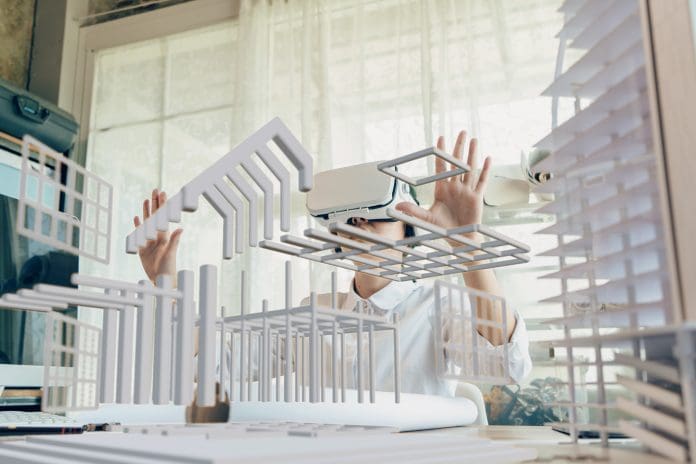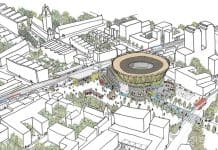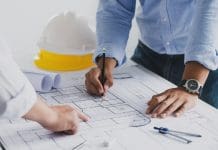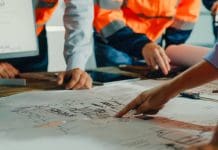The adoption of the metaverse in the Architecture, Engineering, and Construction (AEC) industry is revolutionising BIM workflows
By providing virtual walkthroughs and real-time collaboration, the metaverse streamlines project visualisation and enhances stakeholder communication.
This transformative approach reduces uncertainties, aligns project goals, and enhances safety training. Additionally, immersive 3D environments allow for real-time modifications, optimising project efficiency and sustainability practices.
The integration of data analytics within these environments further enhances decision-making processes. As a frontier for innovation, the metaverse promises to address technological challenges and redefine industry standards. Exploring its impacts reveals unprecedented possibilities for future AEC and BIM practices.
Understanding the metaverse landscape
The metaverse embodies a revolutionary shift in digital interaction, offering a virtual reality world where users can participate in a plethora of activities, create unique virtual environments, and connect on a global scale.
This emerging landscape is characterised by the convergence of virtual economies, where digital assets and currencies foster new economic opportunities that are both decentralised and innovative.
User engagement in the metaverse is driven by the attraction of creative exploration. Participants are not simply passive spectators but active creators of their environments, designing immersive 3D spaces that push the boundaries of traditional architectural design.
This level of creative involvement not only enhances user satisfaction but also stimulates continuous interaction and innovation. The metaverse, thus, serves as a fertile ground for the cultivation of creativity, where the only limits are those imposed by the imagination.
Global interaction is another cornerstone of the metaverse, enabling unprecedented levels of connectivity among users worldwide. This interconnectedness transcends geographical boundaries, allowing real-time collaboration and communication that mirrors, yet enhances, real-world interactions.
Metaverse and AEC integration
Emerging from the dynamic landscape of the metaverse, its integration with the AEC industry offers significant advancements in project execution and design processes.
The Metaverse facilitates immersive experiences that transform traditional approaches to design and construction. By leveraging virtual environments, stakeholders have the opportunity to engage in real-time modifications, allowing for dynamic design integration that enhances both creativity and precision.
A crucial aspect of Metaverse integration is its ability to foster a shared vision among project participants. Virtual walkthroughs within these digital domains enable stakeholders to explore and evaluate layouts before actual construction begins. This reduces uncertainties and aligns expectations, thereby streamlining project execution and minimising costly alterations down the line. Additionally, the ability to visualise projects in a fully immersive environment amplifies design integration, ensuring that all elements coalesce harmoniously.
Stakeholders can also participate in remote teamwork, reducing the necessity for physical meetings to a large extent. This shift not only enhances project efficiency but also fosters a more inclusive approach to project coordination, enabling global teams to work together seamlessly.
Construction safety is another area where the Metaverse proves advantageous. Through virtual simulations, safety protocols can be tested and refined in a risk-free setting, enhancing preparedness and reducing on-site incidents. These simulations not only improve safety but also lead to more efficient training programs, effectively embedding safety culture within the workforce.
Enhancing BIM with the metaverse
By integrating metaverse technologies, BIM workflows are transformed into immersive experiences, allowing stakeholders to interact with building designs in a virtual space. This interactive design capability not only enhances the understanding of architectural projects but also facilitates real-time modifications, enabling architects, engineers, and contractors to make instantaneous adjustments and decisions within a shared environment.
The integration of the metaverse into BIM allows for virtual walkthroughs, where stakeholders can explore and navigate building layouts before construction commences. This capability reduces uncertainties and potential discrepancies, as everyone involved can visualise the spatial relationships and identify design flaws early in the process.
The ability to visualise and modify designs in real time also translates to significant time and cost savings, as it reduces the need for multiple iterations and revisions.
In addition to these benefits, it also supports enhanced safety training and sustainability considerations, ensuring that projects are not only efficient but also environmentally conscious and safe.
Data utilisation and management
Through the seamless integration of BIM data, metaverse platforms provide real-time updates that are crucial for effective decision-making processes. This dynamic approach ensures that stakeholders have access to accurate and up-to-date project information, facilitating a higher degree of precision in planning and execution.
Collaboration tools foster enhanced information sharing, allowing stakeholders to access and manipulate data in real-time, thereby bridging the gap between design, engineering, and construction phases.
Furthermore, the integration of data analytics within these virtual environments offers valuable insights that drive informed decision-making processes. By analysing trends and patterns within the data, project managers can identify potential risks and opportunities, optimising resource allocation and project timelines. This predictive capability is crucial in improving project outcomes, as it allows for proactive adjustments to be made before challenges escalate.
Improving stakeholder communication
The integration of interactive feedback mechanisms in the metaverse environment further transforms communication processes. Stakeholders can provide input directly within the virtual space, allowing for immediate revisions and adjustments. This seamless feedback loop reduces the likelihood of errors, as project specifications and stakeholder expectations are clearly communicated and understood. As a result, the decision-making process becomes more streamlined, with informed decisions being made earlier in the project lifecycle.
Moreover, these immersive experiences promote a deeper understanding of the project by enabling stakeholders to experience designs holistically rather than through traditional 2D plans. This enhanced comprehension fosters better coordination and minimises misinterpretations, ultimately leading to streamlined decisions that are informed by a thorough evaluation of all project aspects.
Sustainability impacts of the metaverse
As the AEC industry increasingly adopts metaverse technologies, sustainability emerges as a critical area of impact, fostering energy efficiency and minimising environmental footprints. The integration of metaverse platforms into construction workflows allows for the visualisation and simulation of sustainable design elements in immersive virtual environments. This capability greatly contributes to reducing the environmental impact of construction projects by enabling stakeholders to optimise resources and design buildings with greater precision.
Despite the evident benefits, technological challenges remain a major concern. Addressing these challenges is essential to fully realise energy efficiency and sustainable design advantages. For instance, overcoming integration complexities and managing vast amounts of data are necessary to ensure that the sustainability benefits of metaverse technologies are maximised.
While the potential for sustainability improvement through metaverse adoption is noteworthy, a concerted effort in research and development is needed to overcome existing challenges and achieve the desired sustainable outcomes.
Future trends
Building on the sustainable impacts of metaverse technologies in AEC, the future trends are poised to reshape the industry’s landscape profoundly. The integration of metaverse platforms is anticipated to revolutionise design immersion, providing stakeholders with enhanced visualisation capabilities that surpass traditional methods. This evolution is set to improve project efficiency by facilitating real-time design modifications and accelerating project timelines. Moreover, the alignment of stakeholders is expected to be more cohesive, as virtual walkthroughs and interactive environments create shared visions, reducing uncertainties and fostering collaborative decision-making.














